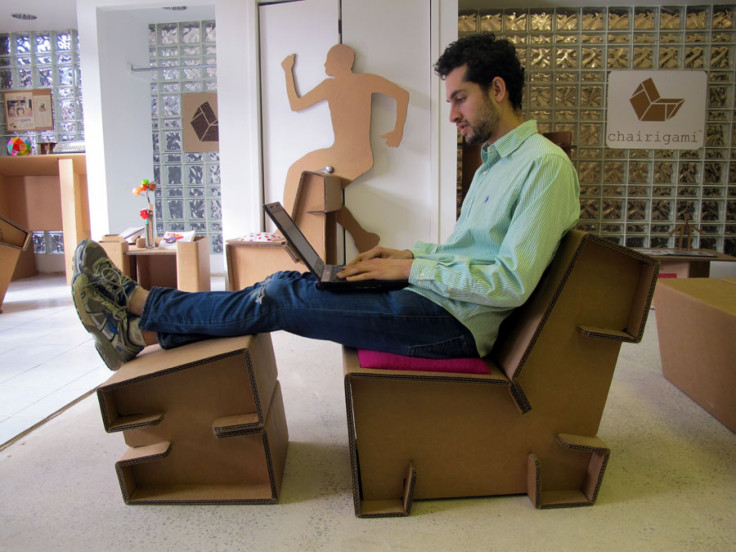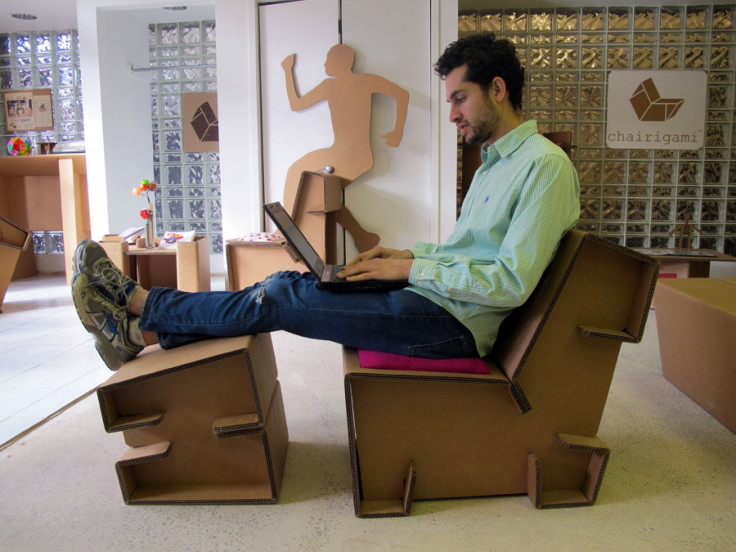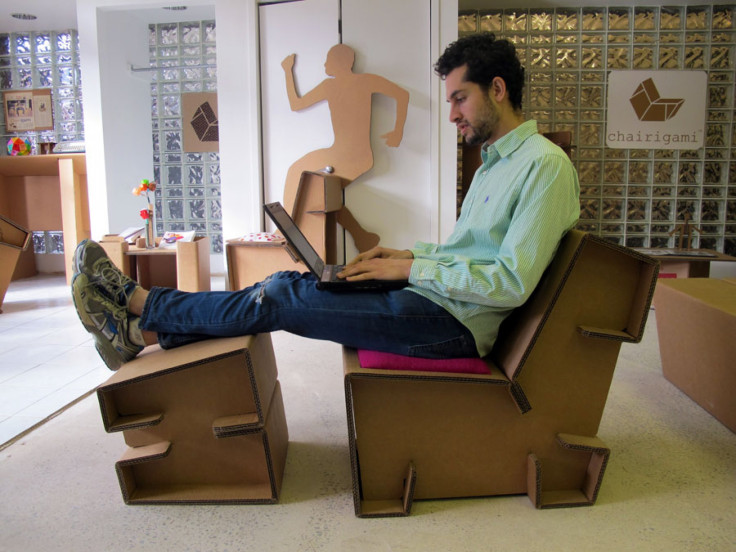Cardboard Furniture (And Bicycles): Everyday Industrial Materials Get A Makeover [PHOTOS]
Anyone that’s just moved into a new apartment or house may know the familiar despair that comes with a roomful of cardboard boxes. Even when unpacked, the boxes remain as silent reminders of your rootless existence. Packing them up and taking them back to the store to be resold or giving them away on Craigslist is yet another onerous task. But what if cardboard could be transformed into another useful object?
The cardboard box is, by itself, a marvel of engineering. Paperboard boxes first cropped up in the early nineteenth century, but the real advance came with the invention of corrugated cardboard. Tear off any piece of cardboard, and you can see the secret to its strength – the wavy “fluted” layer in the middle. Manufacturers make this middle layer from a special kind of cardboard called linerboard, softening it with steam and feeding it into a machine with rollers and meshed teeth that molds the board into a wavy shape. Once pressed between two flat pieces of linerboard, the fluted layer acts like a series of arches, reinforcing the sheet of cardboard and making it much tougher than a flat layer by itself.
So why not take advantage of that strength? If you have some creativity and time, cardboard recycling can begin at home.
Architect Frank Gehry was one of the earliest prominent designers to recognize the potential of cardboard and other industrial materials. Starting in the late 1960s, he began crafting furniture from corrugated cardboard, releasing it under the moniker Easy Edges. A second collection, Experimental Edges, came in 1979. Gehry’s curvy designs are radically different from the geometric form you might expect from his materials. It turns out that, once worked over, cardboard can become surprisingly soft.
Gehry said he meant for his cardboard furniture “to suit the homes of young as well as old, of urban sophisticates as well as country dwellers.”

Modern engineering mavens are following in Gehry’s footsteps with even more streamlined designs. Chairigami, a New Haven, Conn.-based company started by Yale University graduate Zach Rotholz, makes simple modular furniture out of cardboard. Though Chairigami products were initially aimed at college students, they’ve found their way into doctors’ offices, trade shows and other places outside of dorm rooms.

Crafting cardboard furniture to fit your needs doesn’t necessarily require a lot of sophisticated tools or a workshop. Most simple designs can be made by folding, cutting and gluing the base materials. You can embrace the natural beige palette of cardboard or decorate it with paint, ink, colorful tape, or however else you choose.

Even pets can benefit from the cardboard furniture revolution.

Sometimes you don’t have the time to craft actual furniture out of cardboard, but it can still be useful as a quick decorating tool on the cheap. One crafty blogger named Nikki used old moving boxes to add fun accents to an air mattress in her guest room.

But why stop at furniture? Israeli engineer Izhar Gafni is working on making a mass-produced cardboard bike that could retail for about $20. Gafni treats his folded cardboard model with a secret formula to waterproof and fireproof the recycled bicycle. Instead of a chain, the cardboard bike uses a timing belt from a car; the tires are made from reconstituted rubber.
“We are just at the beginning and from here my vision is to see cardboard replacing metals ... and countries that right now don't have the money, will be able to benefit from so many uses for this material," Gafni told Reuters in October.
© Copyright IBTimes 2024. All rights reserved.





















